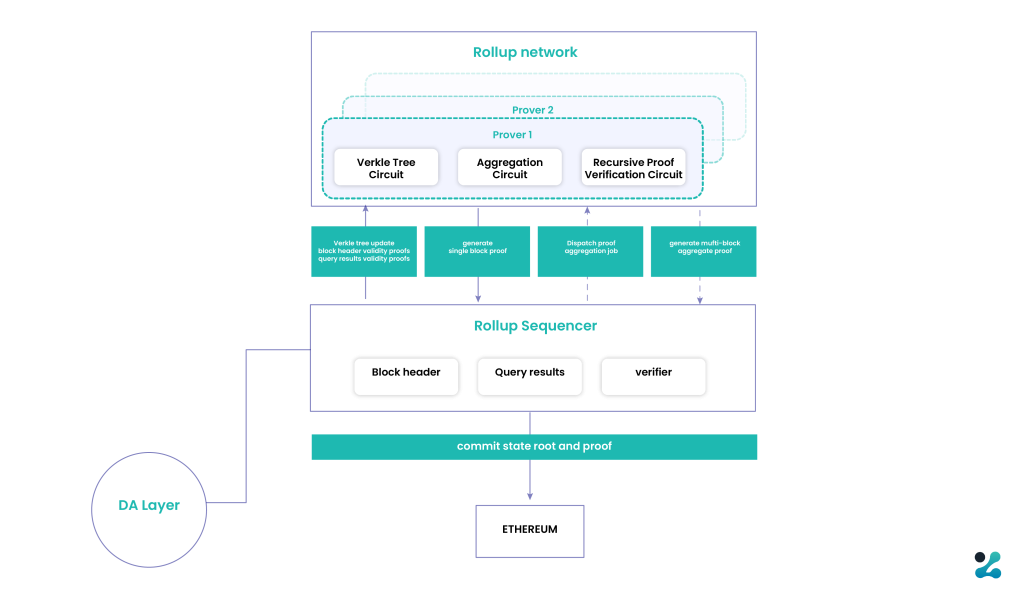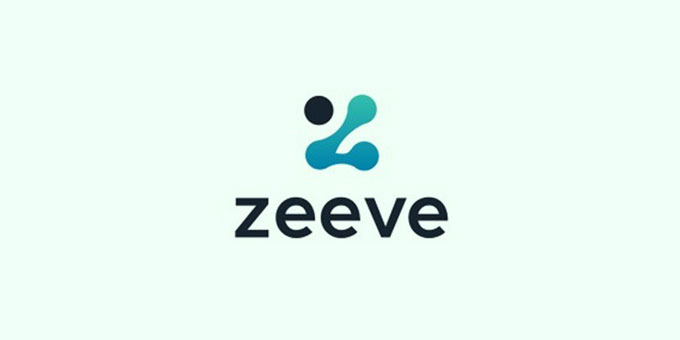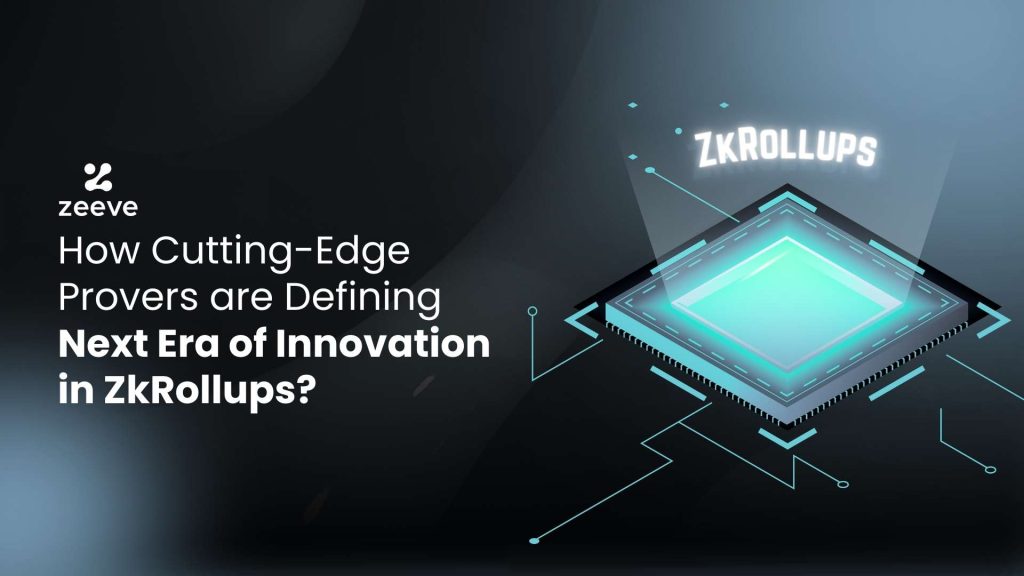Zk-powered Layer2 rollups have soared in popularity due to their unparalleled capability to offer massive scalability for all kinds of web3 applications while ensuring battle-tested security. For the past few years, there have been multiple iterations in Zk-powered Layer2s. Rolling down cutting-edge provers is one such huge step in advancement– be it from Polygon Type 1 ZK-EVM Prover, zkSync Era’s Boojum upgrade, or the decentralized provers from third-party service providers. Through this dedicated article, we will spotlight end-to-end details about provers in Layer2 rollups, including the meaning, functioning mechanism, types, and leading examples of prover solutions.
What are provers?
Provers in L2 rollups refer to a crucial component of the proof system that is accountable for creating proofs of computations for all the off-chain transactions. Whenever a new transaction is initiated, the prover generates a corresponding proof, explaining that the transaction execution is done correctly through complete adherence of ecosystem and consensus rules. For example, in an EVM-compatible Layer2 network, the prover will first prove the correct execution of the EVM, and then an Ethereum (Layer-1) based smart contract will check if the proof is correct and the same as those that Ethereum makes. To function as expected, the prover needs to be accompanied by various components such as a sequencer, aggregator, bridges, zkNode, and zkProver. Over the years, there has been significant evolution in the prover system and that’s the reason cutting-edge provers are now simplifying proof generation and transaction confirmation for Layer2 rollups.
How do provers work?
Prover is yet another component of Zkrollups that works in line with all the other components such as sequencer and aggregator. Here’s a simple explanation of prover’s role in the rollup network:
- A transaction is submitted and on the rollup network.
- Sequencer batches the transaction and adds it into the existing batches of transactions.
- Batch is distributed across Layer2 nodes.
- Prover proves all the batched transactions, generates proof and posts it back to the underlying Layer1, for example Ethereum.
- Smart contract on Layer1 verifies the correctness of proof.
At high level, the below diagram represents the prover’s functioning in a rollup network. Let’s understand this:

- Prover in the rollup network generates various proofs utilizing resources such as GPUs, FPGAs, and ASICs.
- Sequencer dispatches a single rollup block or aggregated multi-rollup block to the prover. Plus, it continues to generate multiple proofs simultaneously.
- The proofs of the single rollup block will include a Verkle tree circuit to prove the authenticity of the tree using a key-value pair. Further, a verification circuit will be implemented to prove correctness of the query results in the block header.
- Multi-rollup block aggregation works by aggregating multiple proof of rollup blocks into a single rollup-block proof. This proof is again submitted on the main chain for the on-chain verification purpose.
Why cutting-edge provers are essential for Next Gen Layer2s?
Provers have always been a vital component of ZKrollups as they ensure the correct execution of EVM and generate proofs. With time, a range of cutting-edge provers have developed to address the challenge of existing provers and make zkrollup chains ready for the future. Based on the specific requirements, Layer2/layer3 rollups can integrate a suitable prover to bring exceptional scaling & more interesting use cases. Let’s first dive into all the leading provers that are available today:
Centralized prover:
Prominent Layer2 blockchains such as Polygon and Zk Sync Era offer highly robust prover mechanisms for rollups that are centralized in nature, but they do not pose any challenges related to security or censorship as of now. For example, Zk Sync Era has recently unveiled a STARK-powered advanced proof-system called Boojum. Likewise, Polygon zkEVM has introduced a high performance Type1 prover upgrade that will facilitate seamless conversion of PoS to zkPoS or validium. These provers are powered by leading-edge technologies to increase efficiency, remove latency, and avoid any complexity that can impact the ecosystem or its performance as a whole.
Decentralized prover:
Decentralized provers are coming out as an innovative solution to some of the challenges of centralized provers, such as single point of failure, high competition cost & hardware requirements, and slow finality. Third-party rollup service providers like Gevulot, WOO Network, and Beldex are offering decentralized provers that L2/L3 rollup chain can implement and continue leveraging centralized prover-like performance and speed while reducing the overhead cost.
Multi-provers:
A multi-prover is another new phenomenon for the rollup landscape. Multi-provers, as the name suggests, implement multiple proofs (like validity & fraud-proof), providing mechanisms (like SNARK and STARK), proving systems, and finally, distinct code implementations coming from different teams. This means that if one proof fails for some reason, the other proof will fight against the vulnerability. For example, if fraud proof doesn’t support block validation, then validity proofs will do what is needed in that case. Proving systems and code implementations will work similarly to ensure the performance efficiency of Layer2 rollups.
Now, let’s discuss the benefits of cutting-edge rollups for Layer2s:
High-end performance for faster confirmation:
Today’s advanced provers– whether centralized or decentralized, they are designed to enable faster confirmation time, boosting the overall performance of Layer2 rollups. For example, cutting-edge provers can use lightweight operating systems, larger circuits, and significant upgrades in zkEVM to ensure exceptional performance.
Low requirement of computational resources:
All the new-age provers require low computational resources to generate proofs. Likewise, hardware requirements for cutting-edge provers have been reduced significantly due to constant iteration and advancement in them. For example– zkSync Era has rolled out Boojum, which is capable of offering superior performance on consumer-grade GPUs. Also, provers use customized hardware that significantly declines the time of proof generation, making it economical for anyone to run their Layer2 rollups.
Zero MEV attacks and transaction denials:
With a fully decentralized prover like Gevulot, Zkrollups can avoid potential “Miner Extractable Value” (MEV) attacks and denial of transaction inclusion, enhancing the network’s user experience. To achieve this, decentralized provers employ decentralization both on sequencer and the proof generation mechanism. Meaning that, sequencers can no longer deny to include transactions or validate blocks. On the flip side, the centralization of sequencers is crucial from the security perspective as it denies to include ‘fake proofs’ or malicious transactions that may lead to the stealing of money.
Highest level of Ethereum compatibility:
Using Industry-leading provers, Layer2 rollups can achieve the highest level of Ethereum compatibility, getting the capability to generate proof for all the existing EVM chains without needing any migration or code modifications. That’s because the prover can preserve Ethereum’s execution logics, allowing the respective layer2 rollup chain to generate proof for their Ethereum-based blocks, thus removing complexities.
Effortless & permissionless implementation:
Most of the provers today are designed to be open-source, which means any Layer2 rollup can implement their desired prover in a permissionless manner. And, if we talk about third-party decentralized provers, they are available for integration as pluggable components. Web3 projects building their Layer2 Zkrollups using any leading frameworks can choose to implement decentralized prover for their chain, thus leveraging the benefits.
Enabling new business model for off-chain applications:
By reducing the cost of computation and enhancing the performance and scalability, cutting-edge provers in layer2 rollups unlock new and exciting business models for off-chain applications that would otherwise not be developed due to high costing and less efficiency. Along with a fully matured L2 to a new chain, each of them can now benefit from prover’s capacity of unlimited computation, shorter confirmation time, and full compatibility with Ethereum (EVM).
Who all are offering Provers for Layer2s?
A wide range of provers are available for Layer2 rollups, out of which we have discussed some prominent names below:
Polygon zkEVM Type1 Prover and Type2 prover:
Polygon currently offers Type1 and Type2 zkEVM prover. With the recently launched Type1 zkEVM prover, Polygon is providing an easy way for existing PoS chains to become Layer2 ZKEVM validum. Whereas, Type2 is more suitable for Layer2 zkEVM rollups. Speaking about the CDK chains, they can opt for either Type1 or Type2 prover, whichever is convenient for their chain’s operations. Being new, Type1 prover has created a buzz in the rollup space with its awesome capability of reducing Ethereum’s transaction cost by 30 to 50X, plus it offers better user experience with Ethereum compatibility, and extremely low latency for Layer2 rollups.
ZkSync Era’s Bonsai Proving engine
ZkSync Era is another key player in offering a highly robust prover for Layer2 rollups. The protocol has launched Boojum, a Rust-based, STARK-powered prover optimized for high performance and low-computation power. With this proving system, ZkSync Era allows rollups to process 100+ TPS while requiring only 16GB GPR RAM. These features allow projects with regular hardware to build their Layer2 in the ZkSync era and benefit from faster transactions and greater horizontal scalability without requiring specialized, high-cost machines. The Boojum update is live on mainnet for around a year, and it has been accommodating superior prover performance for all kinds of rollups.
Gevulot– the decentralized prover network
Gevulot is a permissionless and fully programmable Layer1 blockchain for seamless deployment of decentralized provers in Layer2 rollups. Similar to centralized provers, Gevulot ensures cheap and extremely fast-proof generation with high-performance guarantees. By decentralizing the prover’s architecture, Gevulot offers a range of benefits such as censorship resistance, lower fees, and shared workload on multiple provers. Gevulot offers two different programs; provers and verifiers. Both of these can be either deployed as a pair of proof systems or as a standalone verifier that can produce proof externally, outside the Gevulot ecosystem. Interacting with any of these programs is as simple as interacting with smart contracts. Hence, user experience is also a key point here.
How Zeeve can help?
Zeeve has optimized its Rollups-as-a-service (RaaS) platform with all the relevant RaaS stack needed for launching a fully-functioning Layer2 rollup chain, whether Optimistic or Zkrollup chain. Zeeve has integrated support for a range of cutting-edge provers, from Polygon Type1 zkEVM prover, and ZkSync’s Boojum prover engine, to powerful decentralized prover networks like Gevulot. Projects launching their Layer2 or Layer3 rollup chains can implement a suitable prover into their network and leverage their out-of-the-box benefits.
Also, Zeeve is simplifying the whole process of rollup chain development with its one-click sandbox tool currently available for Polygon CDK chains and ZkSync Hyperchains. Whereas, sandbox tool for Arbitrum Orbit is going live anytime soon. Further, if you are building a modular L2 rollup, Zeeve offers 30+ integration for 3rd party services, including decentralized sequencer, DA layer, account abstraction (AA), wallets, explorers, and a lot more. For more information on Zeeve’s services, contact us. Get a brief response to your queries via mail or schedule a one-on-one call for a detailed discussion.























